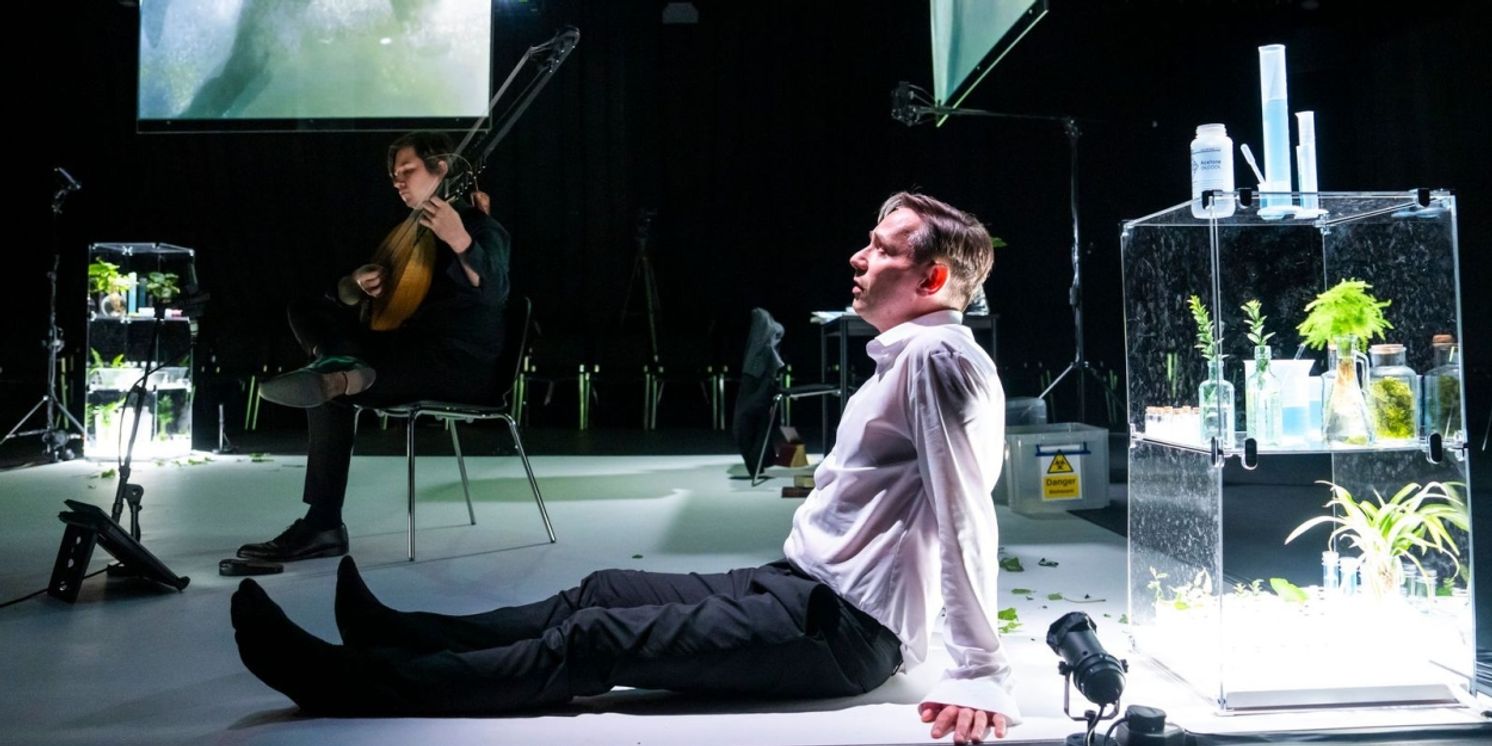Review: AN ANATOMY OF MELANCHOLY, Barbican Theatre
Netia Jones' profound interdisciplinary production runs until 30 October

![]()
We consider mental illness to be a contemporary phenomenon when in reality this is not the case at all. Robert Burton's 17th century treatise The Anatomy of Melancholy is a genre-defying combination of science, poetry and philosophy examining what we would today deem depression.
An Anatomy of Melancholy advances Burton's unbounded style by stratifying the text across interdisciplinary strata: director Netia Jones draws on film, music, and performance to examine pressing questions underpinning discourse on mental illness. The result is as elegant as it is philosophically demanding, a swirling and elegiac piece that supplies no answers, only questions.
Jones is like a surgeon; with a razor-sharp scalpel she slices and dices Burton's text with clinical precision to reform it in a contemporary light. An ominous voiceover recites extracts from the original treatise, juxtaposed alongside Sigmund Freud's Mourning and Melancholia, and acclaimed psychoanalyst Darian Leader's The New Black.
You can almost sense the synapses firing as the ideas flicker and spark. The fundamental question underpinning everything is the question of the mind and body: is depression just an imbalance of chemicals in the brain, or is there something more metaphysical at play?
Spinoza writes of a "conatus" as a life force separate from the corporeal. Descartes describes a similar concept with his "res cogitans". The relationship between mind and body electrified early modern philosophical discourse; one wonders what would they make of the increasing proliferation and dependency of anti-depressants to combat the mental health epidemic, as one of the portentous disembodied voices informs us.
An Anatomy of Melancholy is structured by lutenist Thomas Dunford and countertenor Lestyn Davies performing a selection of music from John Dowland. Little context is given to Davies' performance. He seems to embody a character marauding around what appears to be a laboratory, test tubes and plants surround him encased in glass boxes. A silent but devastating chasm between the mental and physical becomes apparent; can science grasp something that transcends its own methodology?
Davies seems to contemplate this question through his mellow yet poignant vocal performance. Dunford's accompanying lute is equally inquisitive. Together they are like Socratic interlocuters debating in search of a lost answer within Dowland's lyrical yet probing music.
The lack of defined narrative challenges the audience to fill the gaps in images and connect the dots. But some of the imagery demands more interpretation than others: the filmed sequences depict various stages of a man submerged in water, bubbles rippling across the screen rendered in bloodless monochrome, the vivacity of lived experience dulled by mental illness. On a poetic note, it echoes conspicuously Ophelia's demise except the serenity of John Everett Millais' Ophelia is nowhere here. These suicidal visions are torrid and violent.
Themes of death and transience linger beneath each surface. Davies sings hauntingly of love and loss, and snippets of Freud describe death as the ultimate loss of desire. Perhaps it would make more sense to someone better versed in psychoanalysis. But even so, there are enough ideas at play for the piece to resonate.
The most curious idea emerges at the end of the piece. The final voiceover describes how melancholia eventually begets beauty. It is eerily ambiguous note to end on: is beauty is an antidote to melancholy? Or does one prey upon the other?
An Anatomy of Melancholy plays until 30 October
Photo Credit: Tristam Kenton
Reader Reviews
Videos

